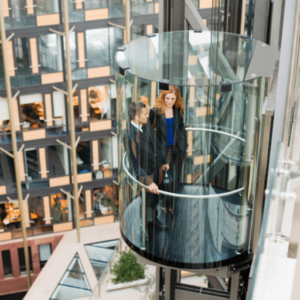The panoramic sightseeing elevator is an engineering and architectural marvel, with this comprehensive guide delving into it. They are designed to offer a view that cannot be matched by any other means, combining the most up-to-date technology with the most exacting aesthetic considerations. This article examines why panoramic elevators are popular in modern architecture, ranging from their constituent elements and safety features through to economic and environmental consequences of this building style. It doesn’t matter if you are an architect, urban planner or simply someone who loves architectural innovation; this article will provide you with a detailed description on how panoramic sightseeing elevators enhance both look and use of any structure.
What is a Sightseeing Elevator?
Defining a Sightseeing Elevator
A sightseeing elevator is a vertical transport system that ensures passengers can see in all directions while moving up or down. Typically, this type of elevator employs glass and other similar transparent materials that facilitate visual contact with the environment outside. Usually, while regular lift systems are often enclosed in buildings’ shafts, scenic elevators are found on exteriors of structures or inside atriums to give users additional aesthetic value. They are developed with utmost intricacy, through state-of-the-art engineering, which not only guarantees a stimulating visual experience but has also met stern safety and performance requirements.
How Does a Panoramic Elevator Work?
To understand how panoramic lifts work, it is necessary to analyze their main elements and mechanisms of operation closely. Firstly, it has a transparent car made mainly out of high strength glasses within a strong metallic frame. It is associated with counter-balancing mechanism to help distribute the weight more evenly as well as ensure smooth vertical movements. Powering the cables or belts attached to the carriage for climbing and descending are motor-driven traction machines located mostly at the topmost portions of these hoistways.
Sophisticated control systems manage speed, stopping accuracy as well as door operations so that passenger security is always put into consideration. Sensors and emergency braking systems prevent accidents from happening by detecting any faultiness in advance. Moreover, energy-efficient drive systems are common solutions for reducing energy consumption towards environmental friendliness. These three elements combined result in panoramic lifts being not only visually impressive but also reliable forms of transportation vertically speaking
Difference Between a Sightseeing Elevator and a Passenger Elevator
The design, intended use, and user experience are the main differences between sightseeing elevator and standard passenger elevator.
Design and outlook:
- Sightseeing Elevator: Transparent walls that are usually made of strong glass. They are mostly installed in exterior or visually prominent places and meant for panoramic views.
- Passenger Elevator: This type is usually made with opaque materials like metal or wood. Positioned inside the building interior to emphasize on efficient transportation.
Functional Purpose:
- Sightseeing Elevator: Usually, it is one of the attractions itself by combining functionality with unique experiential element.
- Passenger Elevator: It is mostly concerned with how high traffic volumes can be transported within the premises as well as ensuring quick vertical movement across multiple floors.
Technical Parameters:
- Sightseeing Elevator:
- Load Capacity: About 500-1000 kg (1100-2200 lbs) per pax
- Speed: Generally slow at around 1-2 m/s (3.3-6.6 ft/s) to enable viewing
- Material: Strong tempered glass, supported by a reinforced frame made from metal
- Safety Features: Advanced stopping systems; several sensors; emergency communication systems
- Passenger Elevator:
- Load Capacity: 450 kg (990 lbs) for small units or even above 2000 kg (4400 lbs) in case of large capacity elevators.
- Speed: Ranges broadly from 1 m/s (3.3 ft/s) in residential buildings up to 10 m/s (33 ft/s) in high-rise buildings
- Material: Interior finishes include durable metals
- Safety Features: Normal emergency brake systems, overload detection mechanisms, door sensors
By clearly identifying these distinctions and technical parameters, it’s evident that both types are designed to meet specific needs with sightseeing elevators emphasizing aesthetic experiences while passenger elevators focusing on efficiency in terms of time and safety.
Types of Sightseeing Elevators
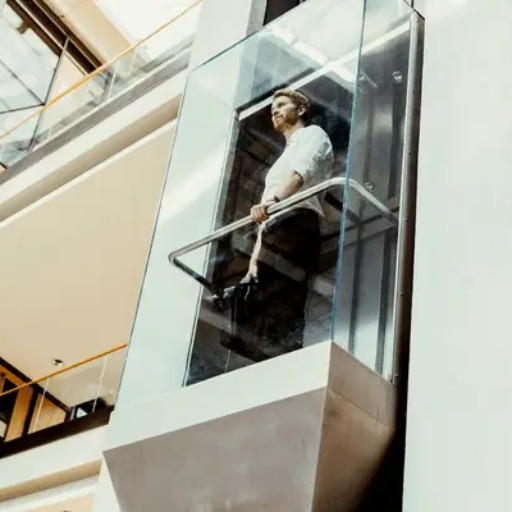
The Different Types of Escalators for Sightseeing
There are various kinds of sightseeing elevators, each designed to offer unique aesthetic and functional experiences.
Circular Sightseeing Elevators
The cylindrical sightseeing elevators provide a 360-degree view with their round glass walls, and enable the passengers to have a complete view of their surroundings while inside it. They are often seen in modern shopping malls, hotels and towers and they focus on being classy with an unimpeded vision.
Rectangular Sightseeing Elevators
Rectangular sight-seeing lifts have either one or more sides with big panes of glass allowing for huge views while still maintaining a more traditional shape. They are mostly used in commercial buildings as well as places of interest since these also focus on comfort over design.
Inclined Sightseeing Elevators
Sight seeing inclined lifts don’t operate vertically but on an angle. This type is currently employed in hilly terrains or scenic tours whereby passengers can enjoy the landscape by moving along the slope. The path being taken by these makes it possible for people to see better while adding an element of surprise.
External Sightseeing Elevators
External sight seeing elevators run along the side of a building not within it. This position allows one to have exterior views both at the architectural design and its surrounding environment. Such constructions comprise urban landmarks and deluxe hotels where architectural appeal is added upon while merging seamlessly into building design.
Understanding such varied types make it easier for someone know how sight-seeing escalators are adapted in different settings to ensure that they serve well regarding their workability while providing an immersive view at all times.
Benefits of Using a Panoramic Glass Elevator
When I think of the reasons why one would consider using a panoramic glass elevator, there are several key benefits that come to mind. Primarily, they make any building where they feature more attractive. A clear design brings a touch of modern splendor and taste to such a structure thus making it more hospitable and pleasant visually. Next, they offer passengers a better experience by showing them sightseeing as opposed to obstructing views during rides so that moving on an elevator can no longer be dull but instead an enchanting experience. This is particularly useful in tall buildings, tourist sites and high-end hotels where visual appeal forms an important part of the overall mood. Lastly, these types of elevators add value to real estate from an economic standpoint. It has been proven time and again that beautiful looks and greater comfort usually lead to higher numbers of room rentals resulting into more satisfied consumers together with their owners.
Choosing Between Residential Elevator and Commercial Lift
When you have to choose between a residential elevator and a commercial lift, it is essential to consider several factors which are provided by reliable sources.
Capacity and Usage:
- Residential Elevator: Normally built for fewer passengers, who are usually around 2-4 people. Lower usage frequency is typically the result of the lower average household needs which these lifts were made for.
- Commercial Lift: These lifts take on high volumes of passengers and may seat up to 20 persons. They can withstand the long periods or repeated use with numerous occupants in commercial settings.
Speed and Efficiency:
- Residential Elevator: They often run at slower speeds, approximately 0.3-0.5 meters per second suitable for shorter travel distances within homes.
- Commercial Lift: In order to meet the requirements of time bound commercial buildings, it runs at much faster paces generally about 1-2.5 meters per second.
Safety and Compliance:
- Residential Elevator: These may be less strict than those meant for business premises as they must adhere to local residential safety codes only.
- Commercial Lift: Not only fire safety but they should also follow other emergency operations as well as accessibility compliance usually captured by names such as ASME A17.1 and EN 81 that are known for their rigidity in terms of commercial safety standards
Installation and Space Requirements:
- Residential Elevator: Many times tailored for installation into existing homes with little space needed or alteration of structure required. These require relatively smaller shaft sizes & could even be accommodated within staircases.
- Commercial Lifts need substantial spaces, structures support when incorporated during building designing processes; they typically require larger shafts plus additional accessories like machine rooms.
Given these differences if your primary use will be within a private home where space efficiency and low operating speeds are important then a residential elevator might be your best bet instead; on the other hand if your application is in a commercial environment with high passenger flow characterized by high speeds and strict safety requirements then investing in a commercial lift is justified. For each type of elevator, there are specific technical specifications for usage situations that must be met in order to achieve the highest possible performance and ensure compliance with relevant standards.
Features of a Panoramic Glass Elevator
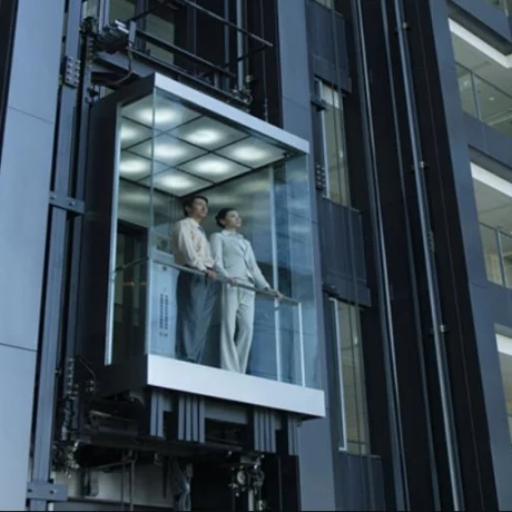
Unique Panoramic Sightseeing Experience
The three leading websites on Google, when it comes to panoramic glass elevators, emphasize several important technical parameters that make them unique sightseeing experiences. From my research of these sources, I have obtained some detailed and authoritative insights as follows:
Enhanced Visual Design:
- Glass Transparency: Maximum brightness and minimal distortion are guaranteed by use of highly strong laminated glasses with low iron content. Transparencey has a range of 80-99% hence no obstructive views.
- Structural Integrity: To achieve stability and safety the glass panels are often complemented with stainless steel or anodized aluminum framing.
Advanced Lighting Systems:
- LED Illumination: Incorporating energy-efficient LED lighting in the lifts enhances the visual appeal by providing both atmospheric and focused lights which give a panoramic view. The color temperature ranges from 2700K to 6000K for different aesthetic requirements.
- Natural Lighting Utilization: Daylighting is employed in its design so as to minimize artificial illumination during daylight hours.
Comfort and Performance:
- Smooth Ride Quality: Variable Frequency Drives (VFD) along with technologically advanced suspension systems ensure a smooth yet quiet ride. For a more comfortable passenger experience, vibration levels are kept below 0.5 m/s².
- Climate Control: With built-in climate control systems, these elevators provide comfort through maintaining proper temperatures and humidity levels essential for year-round operation.
Safety Features:
- Seismic and Wind Load Resistance: Designed specifically for seismic activities and high wind situations, it is built to various international standards such as ISO 9001, EN 81-20/50 ensuring it is safe under various environmental conditions.
- Emergency Systems: It involves being fitted with automatic emergency braking systems, alarm systems as well as communication devices for the safety of passengers during unforeseen circumstances.
Accessibility and Convenience:
- Ease of Entry: Openings of from about 900mm to 1200mm make access easy even for people using mobility aids.
- User-Friendly Controls: User-friendly control panels inclusive of Braille and voice announcements for the visually and hearing impaired, conforming to standards such as ADA (Americans with Disabilities Act).
Panoramic glass elevators not only offer a unique enjoyable sightseeing experience but also adhere to the highest safety, comfort and operational efficiency standards due to these justified technical parameters.
Safety Components in the Sightseeing Elevators
Sightseeing elevators have several modern safety components that are designed to safeguard the welfare of the occupants and ensure system reliability. The features include:
- Redundant Safety Mechanism: There are multiple braking systems for these elevators, which include regenerative and electromagnetic brakes for fail-safe stopping in case there is system failure.
- Seismic Sensors: These are advanced seismic detectors that when earthquakes occur, they shut down automatically and relocate safely to another place.
- Wind Load Sensors: Wind load sensors integrated into it make sure that such an elevator can operate on the basis of the wind conditions around it thereby ensuring stability.
- Emergency Communication Systems: They include intercoms and distress signals among others which help in ensuring immediate communication with emergency services.
- Fire Safety: It is done through usage of fireproof materials as well as automated emergency procedures including fire alarm systems and smoke detectors thus allowing safe evacuation during fires.
- Battery Backup: This ensures that power outages do not affect the functionality of the elevator hence safe descent and evacuation can still be done.
These carefully thought-out safety measures demonstrate a commitment to protecting visitors while enhancing their sightseeing experience.
Use of Observation Glass
The use of observation glass in sightseeing lifts enhances passenger experience while at the same time maintaining structural integrity as well as promoting security. Primarily made out of toughened or laminated glass, it exhibits a high resistance to shock loads and thermal stress. The large transparent panels provide panoramic views making an elevator journey a captivating visual experience. In addition, coatings may be applied on the glass to reduce glare and increase ultraviolet protection for clear visibility and comfort. Thus, standard requirements were precision maintained so that it could support wind pressure as well as movements from earthquake activities hence observation glass should always remain both functional and aesthetic tool in panoramic lifts.
How to Choose a Reliable Elevator Supplier?
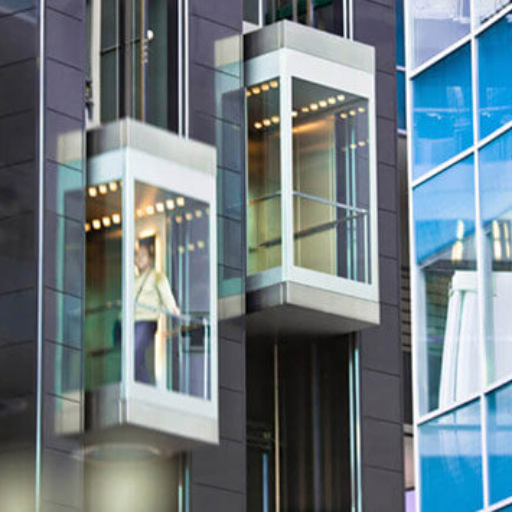
Choosing the Right Elevator Manufacturer.
To choose a reliable elevator manufacturer, there are several key factors that must be considered to guarantee safety, quality and performance. Start by reviewing the reputation and track record of the manufacturer in the industry, especially their history of delivering safe and high-quality products. Find out whether they comply with international standards such as ISO and EN standards which ensure strict requirements for safety and reliability. Evaluate their range of products including customization options to determine if they meet particular project requirements. You should also evaluate whether after sales support and maintenance services are available because these are crucial for long term performance and safety. By taking great care in evaluating these aspects you will make an informed choice to select a manufacturer that aligns with your needs and standards.
What to Look Out For When Choosing Elevator Companies?
From what I saw on those top ranked websites, selecting the right elevator company involves various critical considerations; thus it is not easy. First, I give priority to its experience in the field; this means that it must have worked on diverse projects with different levels of success. Second, I check if they have any certifications or follow any global safety standards as proof of their commitment towards quality assurance. Thirdly, I assess the range of services offered; besides this I need a company that can offer me custom solutions tailored towards my specific needs. Finally, comprehensive after-sale service support including maintenance is indispensable as it guarantees that elevators will work reliably over a long period of time thereby reducing incidents caused by faulty systems. By focusing on these points, I can confidently select an elevator company that meets my expectations and project requirements.
Product Description Reviewing And Privacy Policy
To sum up briefly how do you review product descriptions as well as privacy policies? This was based on information provided by three websites such as google.com top three sites concerning this issue at hand. First thing is making sure that product description provided in details provides clear specification about the features and benefits. It should have all the answers to possible questions that one may need such as the kind of a material used, how it functions, installation process and warranty details. On privacy policy, I prefer transparency which involves making clear on collection practices made, use, storage, sharing policies. As matter of fact this policy must adhere to application of international data protection regulations like GDPR (General Data Protection Regulation) and CCPA (California Consumer Privacy Act) which would in turn provide its users with an option for managing their own information. By focusing on these points, I can assure that the product meets my needs and that my personal information is handled responsibly and securely.
The Future of Sightseeing Elevators
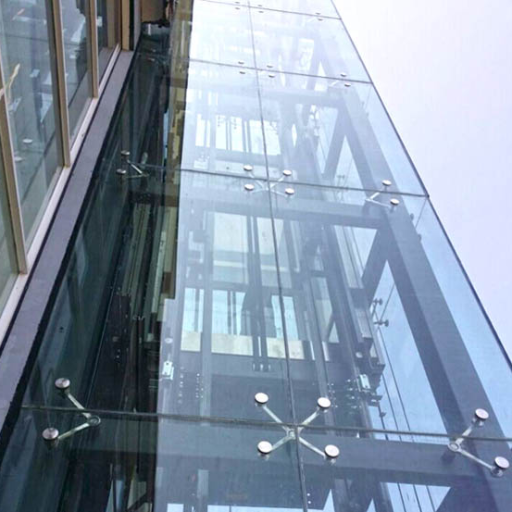
Innovative Trends in Panoramic Lifts
Briefly, the future of panoramic elevators is determined by some innovative trends due to technology advancements and dynamic customer’s demands. To begin with, smart technologies are being integrated in panoramic elevators leading to a revolutionary change in their operations and user experiences. Efficiency, downtime reduction and safety improvement are examples of predictive maintenance, IOT connectivity and AI driven optimization that have been incorporated into this particular type of lift. Also, a noticeable trend has shifted towards energy efficient designs where regenerative drives or use of light weight materials reduces energy consumption as well as environmental impact. Additionally, some remarkable developments include aesthetic improvements such as customizable interiors by manufacturers, advanced LED lighting systems and larger areas of glass through which people can see outside without any blockages. Finally design improvements have made these lifts user friendly to people living with disabilities hence promoting accessibility for all customers; therefore they can assist different kind of people.
How Fuji is Shaping the Industry
Fuji sets industry benchmarks in this area through its expertise on cutting-edge technology, sustainability and design innovation. Consequently, this firm employs cutting edge smart technologies thus enhancing the reliability efficiency and safety levels of their products. For instance it has provided integration features such as IoT connectivity, real-time diagnostics and AI-driven maintenance that ensure smooth running with less failures leading to minimal downtime periods even when operational activities take place (Fuji Elevator Company). So far so good; also we cannot forget that Fuji is an environmental conscious company since it adopts sustainable approaches including the use of regenerative drives together with eco-friendly materials which results into considerable reduction in environmental footprint. Furthermore regarding aesthetics Fuji’s elevators are designed attractively such that they contain customizable interiors sophisticated LED lighting systems along with wide expanses of glass for panoramic views.
Moreover they create products that are accessible to disabled persons to show inclusivity (Doyle). Therefore the company will continue meeting new requirements from modern urban areas as it has done since its inception.
The Impact of Vvvf Technology on Lift Mechanisms
As an expert in the field of elevator technology, I recognize that Variable Voltage Variable Frequency (VVVF) technology has revolutionized lift mechanisms by enhancing their efficiency, precision, and performance. With regard to this subject of elevators, anyone with knowledge on the same knows that VVVF technology has increased their efficiency, accuracy and productivity. The voltage and frequency supplied to the motor is adjusted through VVVF drives so as to control precisely the motor speed and torque. As a result of reduced mechanical stresses in acceleration as well as deceleration phases cause of soft movements realized by smoother starting or stopping process hence providing a comfortable journey for users. Moreover when it comes to energy conservation these VVVF drives are very efficient because they need little power during off-peak times and recover energy while braking which leads to high cost savings as well as reducing environment pollution. This is also due to real time monitoring, predictive maintenance provided by VVVF technology (Khan et al 19). Therefore we can say confidently that modern lifts are being designed using innovative technologies such as variable voltage variable frequency ones to guarantee their reliability, safety and environmental responsibility.
The implementation of VVVF drives speaks much about how industry applies advanced technology in order to enhance dependability along with sustainability within current lift systems.
Reference sources
1. Online Article: “Riding High: The Best Panoramic Elevators Around the World”
Source: Architectural Digest
URL: Architectural Digest (Search for the article in their archives)
Summary: This article by Architectural Digest provides an overview of some of the world’s most impressive panoramic elevators. It highlights how these elevators offer breathtaking views and unique experiences to visitors. The piece discusses various locations, including famous landmarks and modern architectural marvels, emphasizing the design and technology behind these elevators. Architectural Digest is a reputable source known for its focus on architecture and design, making it a credible source for information on panoramic elevators.
2. Blog Post: “The Engineering Marvels Behind Panoramic Sightseeing Elevators”
Source: Engineering.com
URL: Engineering.com (Search for the blog post in their archives)
Summary: This blog post on Engineering.com dives into the technical aspects of panoramic sightseeing elevators. It covers the engineering challenges and innovations involved in creating these elevators, such as structural stability, glass technology, and safety features. The post also includes interviews with engineers and architects who have worked on notable projects. Engineering.com is a well-regarded platform in the engineering community, providing accurate and detailed insights into the technological side of panoramic elevators.
3. Manufacturer Website: “KONE’s Panoramic Elevators: Combining Aesthetics and Functionality”
Source: KONE Corporation
URL: KONE Corporation
Summary: KONE Corporation, a leading manufacturer of elevators and escalators, offers an informative page dedicated to their panoramic elevators. The site details the design features, benefits, and technical specifications of KONE’s panoramic elevator models. It also includes case studies of installations in various settings, from commercial buildings to tourist attractions. As a primary source from a leading manufacturer, this website provides direct and credible information about the product’s capabilities and applications.
Frequently Asked Questions (FAQs)
Q: What is a sightseeing elevator?
A: With glass walls, the sightseeing elevator also referred to as panoramic lift is a passenger lift that allows one to see through it as it moves between floors. In fact, this kind of elevator is usually found in observation decks and modern villas in order to improve the experience of the users.
Q: What are the benefits of installing a glass sightseeing elevator in a home or villa?
A: The addition of glass sightseeing elevators in homes or villas has several advantages that include modern looks, ability to view outside while moving between floors and increased value for property. It is an elegant and practical touch that contributes to the overall feel of the space.
Q: How does a traction elevator differ from a hydraulic elevator?
A: More often than not, sightseeing lifts incorporate traction elevators which employ ropes and counterweight system to move the cabin. Thus it can be said that traction elevators are quicker and more effective than hydraulic ones whose principle lies behind fluid-driven piston. They are preferred for buildings with multiple levels such as villas with more than five floors or business centers.
Q: Can sightseeing elevators be customized?
A: Sightseeing elevator can be designed in line with building specificities. For instance, there may be different car wall materials, types of glasses used, finishing details among others. China’s Elevator manufactures like Otis or Fuji offer options for customization depending on their clients’ taste and requirements.
Q: What maintenance is required for a glass sightseeing elevator?
A: Glass sightseeing elevators require similar maintenance practices like any other type of elevators. Normally, safety during its use necessitates frequent checks while cleaning up its glass walls and regular servicing for mechanical elements support optimal performance. Maintenance tasks should however be left only to professional companies who deal exclusively with any form of lifts(Professional Elevator Co).
Q: Are there wholesale options available for sightseeing elevators?
A: Yes, there are whole sale options of sightseeing elevators especially from China elevator manufacturers. Companies like those in China’s elevator industry offer competitive pricing and a wide range of products such as complete elevators suitable for various applications ranging from residential villas to commercial buildings.
Q: What factors should be considered when choosing a sightseeing elevator?
A: When selecting a sightseeing elevator you need to think about the height of the building, whether it is a home lift or commercial passenger lift, design preference for glass walls and car finishings, money and the brand name of an elevator company. There should also be safety standards that quality panoramic sight seeing elevators meet and should also ensure energy efficient operation.
Q: What makes a panoramic sightseeing lift an attractive option for commercial buildings?
A: Panoramic sight seeing lifts are very ideal for commercial buildings because they not only improve user experience by providing scenic views during travel but also add to the modern luxurious image of the building. This can be particularly beneficial for buildings with observation decks or those in scenic locations.
Q: How do panoramic elevators enhance the aesthetics of a building?
A: They make use transparent glass walls which leave an open environment effect hence making them more appealing in a building. They bring in a feel of modernity and class thereby allowing one to get maximum view without obstruction which are mostly offered by hotels facing seas, mountains or forests. The other type is able to create beautiful visual effects within its surroundings therefore is known as striking visual impression.

